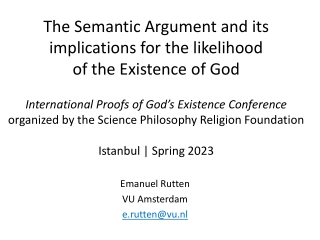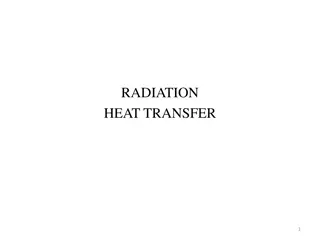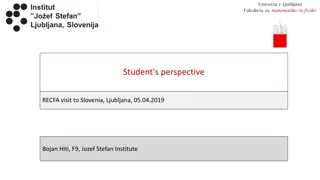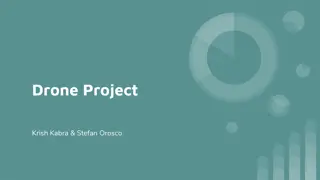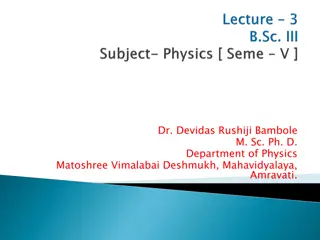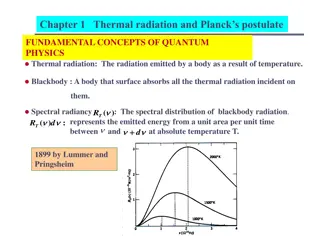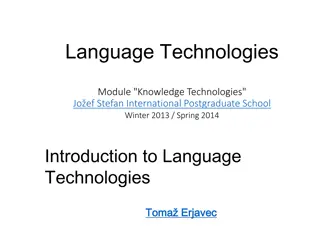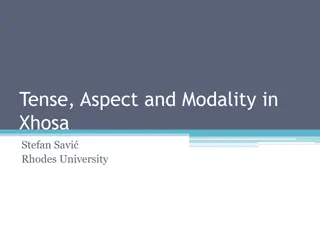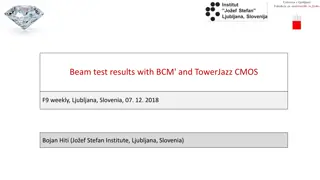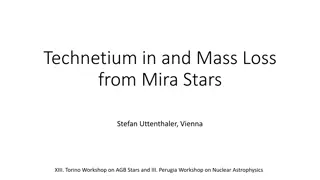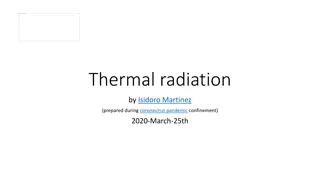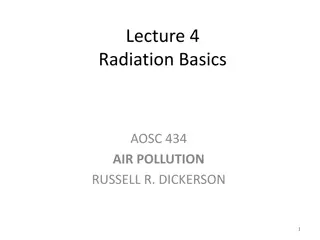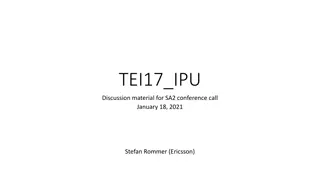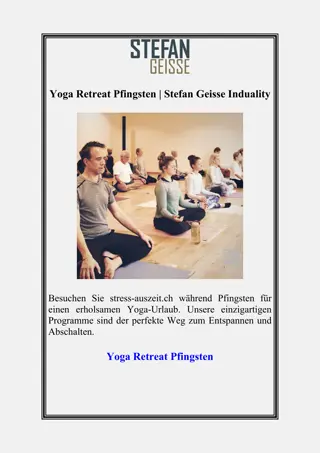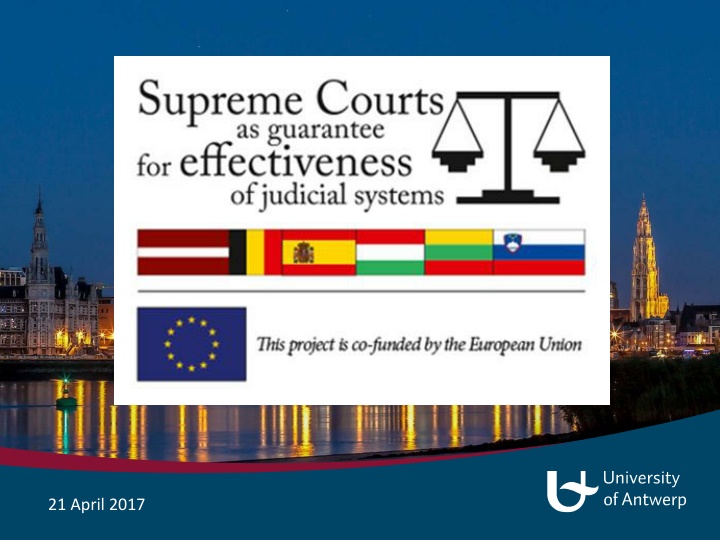
Supreme Court Transparency Research & Documentation Units
A discussion on transparency in Supreme Courts, focusing on access to case law, regulation, epistemology, democracy, efficiency, and the publication of court decisions. The importance of making judgments available to the public, user-friendly search facilities, and summarizing court decisions are highlighted.
Download Presentation

Please find below an Image/Link to download the presentation.
The content on the website is provided AS IS for your information and personal use only. It may not be sold, licensed, or shared on other websites without obtaining consent from the author. If you encounter any issues during the download, it is possible that the publisher has removed the file from their server.
You are allowed to download the files provided on this website for personal or commercial use, subject to the condition that they are used lawfully. All files are the property of their respective owners.
The content on the website is provided AS IS for your information and personal use only. It may not be sold, licensed, or shared on other websites without obtaining consent from the author.
E N D
Presentation Transcript
Supreme Court Transparency Research & documentation units of the Supreme Courts Prof. dr. Stefan Rutten University of Antwerp
Chapter 1 Transparency: access to case law 3
Transparency REGULATION: open hearings, public access to records, and written statements of reasons EPISTEMOLOGY: access to case law through the publication of the Supreme Court s decisions and national case law databases DEMOCRACY: public control of the courts; empowerment of the citizens Transparency EFFICIENCY: information on statistics about e.g. the length of proceedings 4
Publication of Supreme Courts Decisions 1. Make all judgments available to the public via an online database, accessible free of charge, but provide user-friendly search facilities and summaries of court decisions 5
Publication of Supreme Courts Decisions all decisions, but provide user-friendly search facilities and summaries of the decisions most SCs publish all decisions FI, LV: only cases with sufficient precedential value PT: cases with insufficient precedential value only summarized RISK: an overload of information can lead to lesser access to justice Search options (only 50% SCs) such as key words, relevant legal provisions, importance level indicators (HUDOC database: 3 levels; SP for internal use only) + European Case Law Identifier (ECLI) 6
User-friendly search facilities Supreme Court Austria Austria (Administrative) Belgium Cyprus Czech Republic Estonia Finland Germany Hungary Ireland Italy Latvia Lithuania Lithuania (Administrative) Luxembourg Netherlands Poland Poland (Administrative) Portugal Portugal (Administrative) Romania Slovakia Slovenia Spain Sweden Sweden (Administrative) Total (26) Keywords ECLI References related cases References legislation X No electronic database X X No electronic database No electronic database No electronic database X X X X X X X X X X X X X X X X X X X X X X X X 13 6 5 3 7
Publication of Supreme Courts Decisions a summary of the decision is useful since it makes it easier and quicker to decide whether or not the decisions that were found are actually relevant (15/26 SCs = 58%) online database (in addition to or to replace printed compendium) accessible free of charge 8
Publication of Supreme Courts Decisions 2. Take appropriate measures to safeguard data by providing the possibility for the parties to request anonymization of the judgement 9
Publication of Supreme Courts Decisions transparency vs right to privacy software exists that simplifies the process of anonymization (LT) a majority of the SCs anonymize their decisions (21/26 = 81%) ECJ and ECHR only anonymize upon request Cost-benefit perspective: anonymization is not a priority Reasoned request for anonymization and possibility for the judge decides on his own motion 10
National Case Law Database 1. States need to provide a national case law database with user-friendly search facilities and adequate safeguards for the protection of personal data 11
National Case Law Database Requirements national case law database = requirements database of SC s decisions (cf. supra) Feasability: A general case law database is available in most countries 22/26 = 85%) Free access, except DE, LU, IT Recommendation: integration of case law in general national case law databases SC s case law + a selection of the decisions of the lower courts AND European Court of Justice and the European Court of Human Rights 12
National Case Law Database 2. Translate the most important decisions that involve EU law 13
National Case Law Database Survey: some courts publish English or French abstracts of decisions relevant to other jurisdictions Administrative law: ACA-Europe, Jurifast database Nordic countries: EU-law and human rights law 14
Chapter 2 Research and documentation units of the Supreme Court 15
Research and documentation work Research & documentation unit Research and documentation work Law clercks = research assistants Cooperation with academia 16
Historical note First introduced in the US SC increased workload at the Supreme Court and associated delays in judicial action 1886: stenographic clerk for each justice of the Supreme Court (legal secretary) 1919: introduction of research assistants 1939: merits of legal assistants generally acknowledged 1990 s: introduction of research assistants in the European SCs 17
Institutional setup of the research and documentation units within Supreme Courts Why R&D units and research assistants? Avoiding judicial backlog, improving the quality of judicial decisions, helping national judges to ensure the effective application of international and European law Risks conditioned by the funding made available to the judicial system the judge must be independent from the research assistant research assistants must act with the same independence & impartiality as judges 18
Institutional setup of the research and documentation units within Supreme Courts 1. Provide support to the judges by establishing a research and documentation unit as well as by appointing research assistants 19
Support of Supreme Court Judges System Supreme Court % Research and documentation unit AT; CZ; NL; PL; PL (A); PT; PT (A); RO; SK; SP 10 38 % Research assistants CY; BE; FI; DE; HU; IE; SE; SE (A) 8 31 % R&D unit + research assistants AT (A); EE; IT; LV; LT; LT (A); SL 7 27 % None LU 1 4 % Total 26 20
Institutional setup of the research and documentation units within Supreme Courts almost all SC judges benefit from research assistance ideally a combination of a research & documentation unit, with (a pool of or personal) research assistants. advantages of dual-system: R&D unit contributes to uniformity R&D unit avoids double work; more cost-efficient when clear task division between R&D unit and research assistants Research assistants provide case specific support to judges 21
Institutional setup of the research and documentation units within Supreme Courts Research & documentation unit Preparing memoranda in response to general queries Proof-reading (spelling, grammar, citations, uniformity ) Compiling bench books Writing handbooks Monitoring national/EU legislation and ECJ and ECHR case law (e.g. editing newsletter for the general public) Research assistant Preparing memoranda in response to case-related queries Preparing bench memoranda Proof-reading (content- related) Summarising cases Carrying out extra-judicial work 22
Institutional setup of the research and documentation units within Supreme Courts 2. Monitor EU legislation and the case law of the Court of Justice continuously 23
Cooperation with academia 1. Take initiatives to safeguard the exchange of knowledge between judges, academia and other law professionals 24
Cooperation with academia Why? The quality of a judicial decision depends not only on the individual judge involved: continuous training of judges is indispensable How? Organizing, facilitating or participating in conferences HU: 1-year traineeship at the Supreme Court for PhD students HU: university professors acts as senior advisers 25
Cooperation with academia 2. Offer traineeships at the Supreme Court 26

